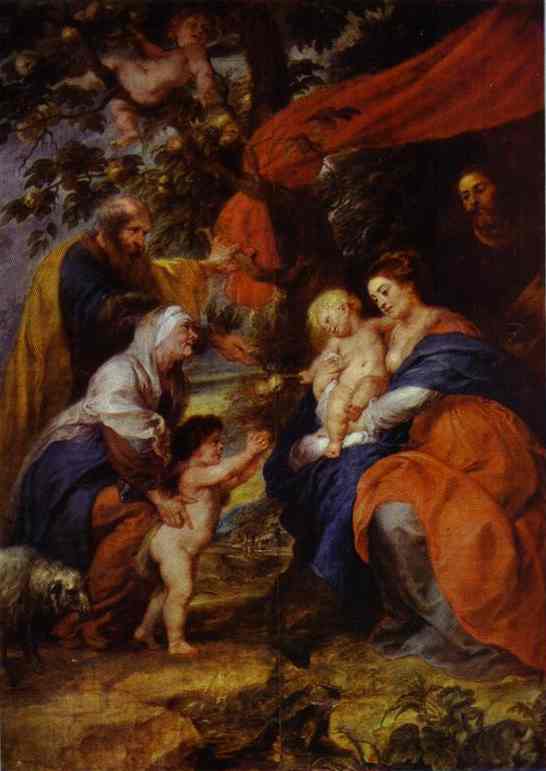 I have written recently about the reading of the book of nature for symbolic meaning. I have recently moved to a new address in Massachussetts. The house is in a rural setting (in what will eventually be the new campus for Thomas More College, a place called Groton). From the kitchen window I can see a commercial apple orchard, and across the field I often see deer and wild birds. So, I thought, what can be read in this particular book of nature? Here are two examples: the first is a traditional one, and most obvious for my New England setting, the apple.
My Dictionary of Saints, Signs and Symbols says that the apple is a symbol for sin when in the hand of Adam or Eve and of salvation when associated with Christ. There is speculation as to why the apple became associated with the forbidden fruit, mentioned in Genesis. My dictionary says that the Latin word for apple and for evil is the same: malum. Most of the paintings that I am aware of that use this as a symbol for salvation do so in the context of either a painting of the Virgin and Child, in which the new Adam returns the apple to the new Eve; or in the Holy Family. In the selection I have shown, I have included below one example of a painting by an anonymous 15th century artist called The Holy Kinship, which shows the extended family of Jesus. In this St Elizabeth hands an apple to the little boy. This might be symbolic, but as with all symbols I have to remember that the symbolism doesn’t rule out a more literal interpretation: a mother giving a treat to her little boy might simply be a charming indication of maternal love.
I have written recently about the reading of the book of nature for symbolic meaning. I have recently moved to a new address in Massachussetts. The house is in a rural setting (in what will eventually be the new campus for Thomas More College, a place called Groton). From the kitchen window I can see a commercial apple orchard, and across the field I often see deer and wild birds. So, I thought, what can be read in this particular book of nature? Here are two examples: the first is a traditional one, and most obvious for my New England setting, the apple.
My Dictionary of Saints, Signs and Symbols says that the apple is a symbol for sin when in the hand of Adam or Eve and of salvation when associated with Christ. There is speculation as to why the apple became associated with the forbidden fruit, mentioned in Genesis. My dictionary says that the Latin word for apple and for evil is the same: malum. Most of the paintings that I am aware of that use this as a symbol for salvation do so in the context of either a painting of the Virgin and Child, in which the new Adam returns the apple to the new Eve; or in the Holy Family. In the selection I have shown, I have included below one example of a painting by an anonymous 15th century artist called The Holy Kinship, which shows the extended family of Jesus. In this St Elizabeth hands an apple to the little boy. This might be symbolic, but as with all symbols I have to remember that the symbolism doesn’t rule out a more literal interpretation: a mother giving a treat to her little boy might simply be a charming indication of maternal love.
Images from top: Gerard David, Flemish 15th century; Stanzione, Italian 16th century; Rubens, Flemish 17th century
The Holy Kinship, German 15th century. St Elizabeth is bottom right.




